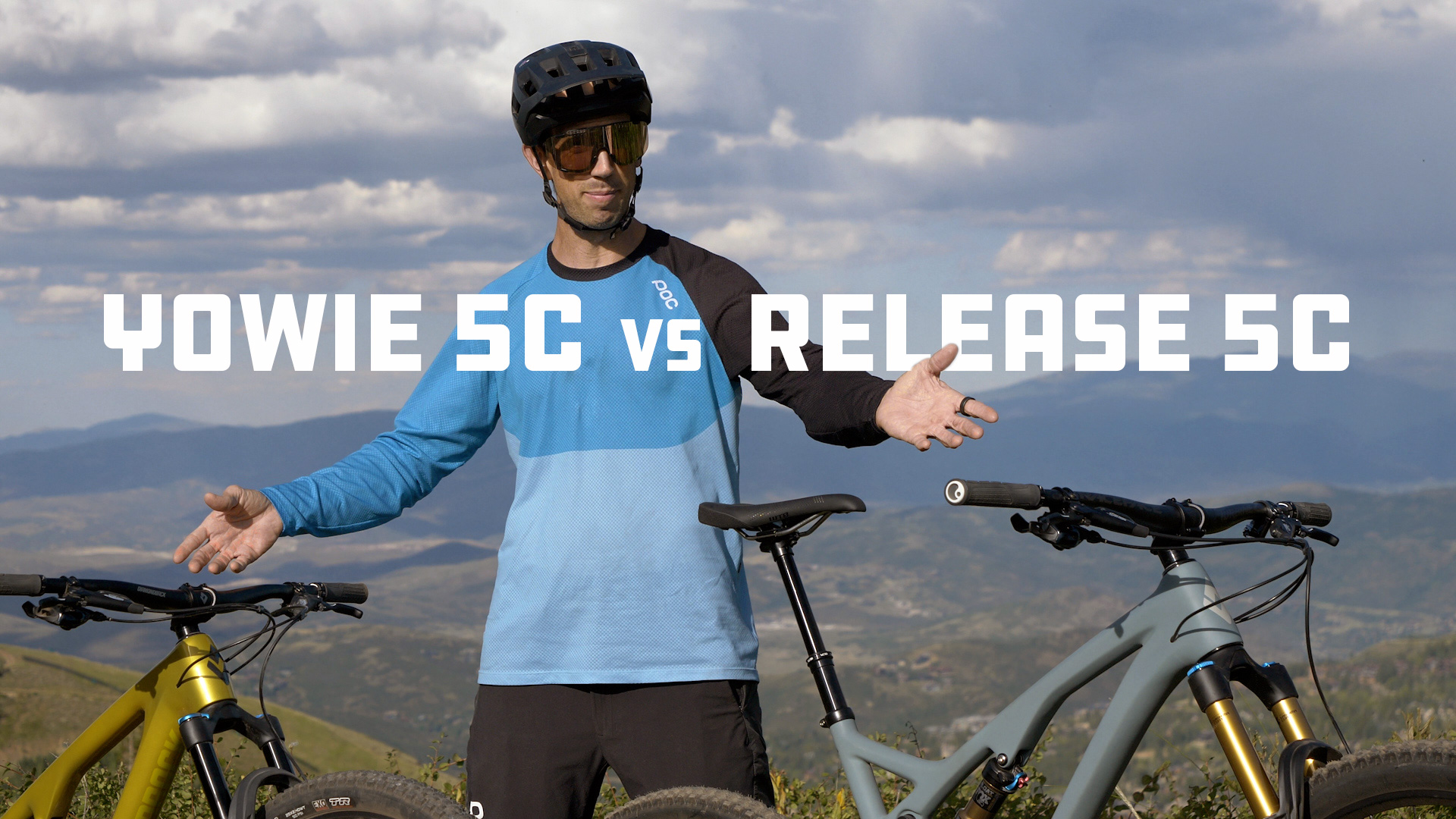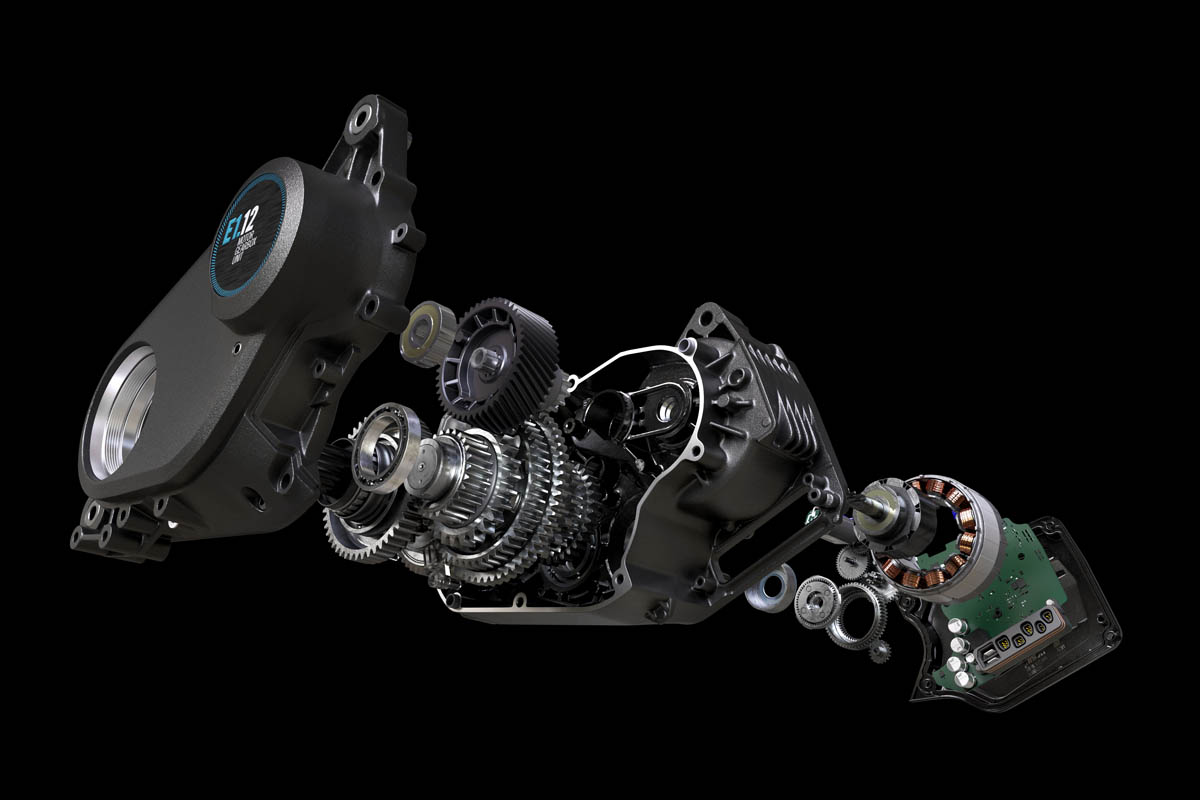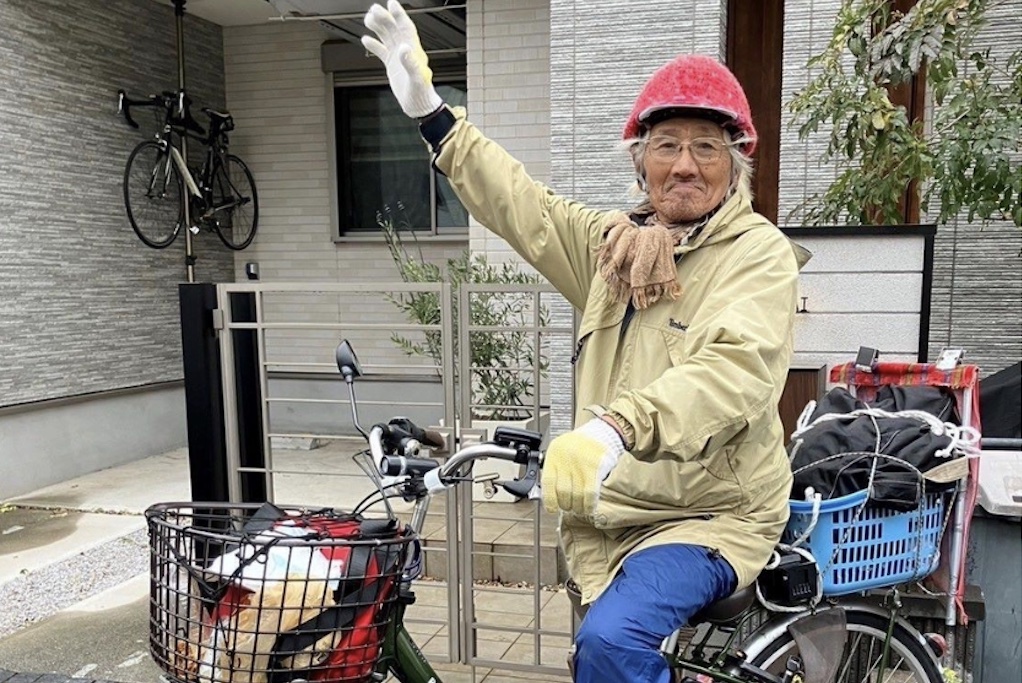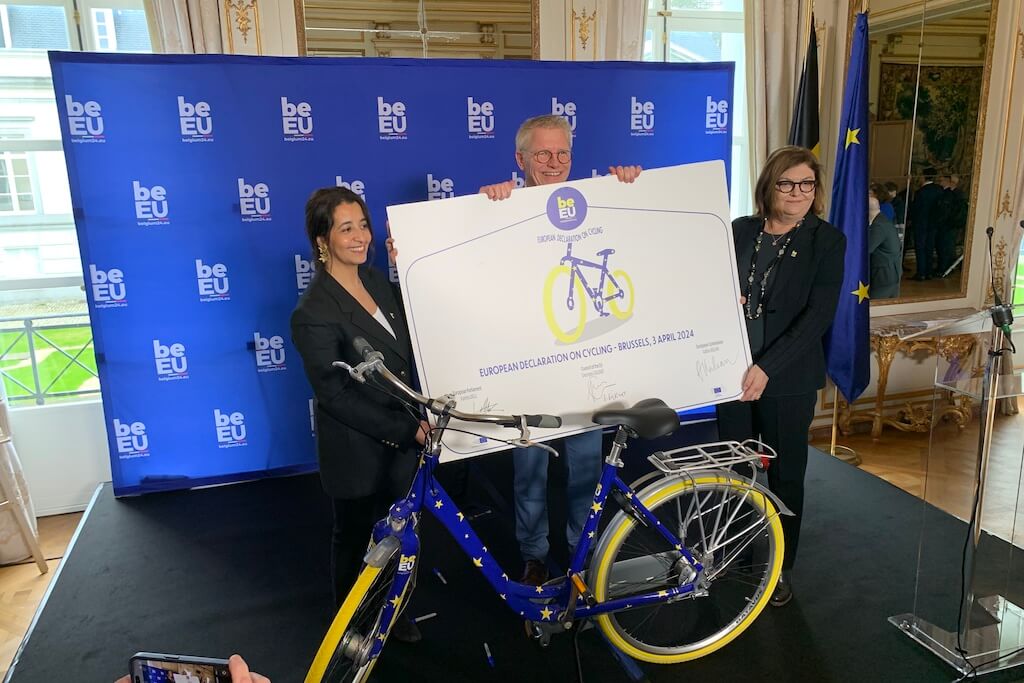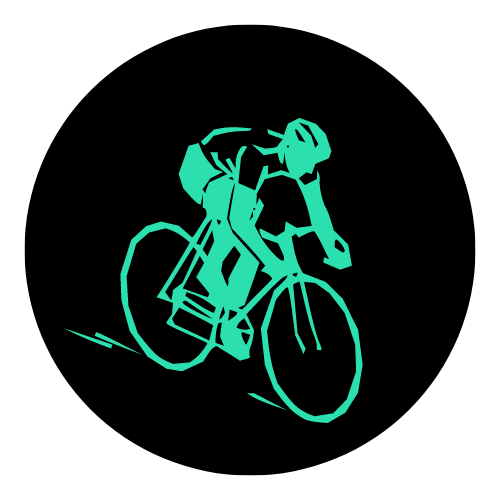Science & Cycling Conference
Last week I attended the Science & Cycling Conference in Florence, Italy. For those that aren’t aware, the Science in Cycling conference is put on by the journal of Journal of Science & Cycling and is typically hosted the two days before the Tour De France and in the same starting city. It’s an excellent opportunity to network with some of the thought leaders in cycling performance and if you are interested in the subject I highly encourage you to consider attending. It’s also great to get a chance to check out the start of the Tour. Stay tuned for our blog post from the ground at the Tour next week. Science & Cycling Conference Presentations Because many of the presentations were from pre-publication academic studies it’s difficult to give a full recap of the event and presentations. Instead, […]
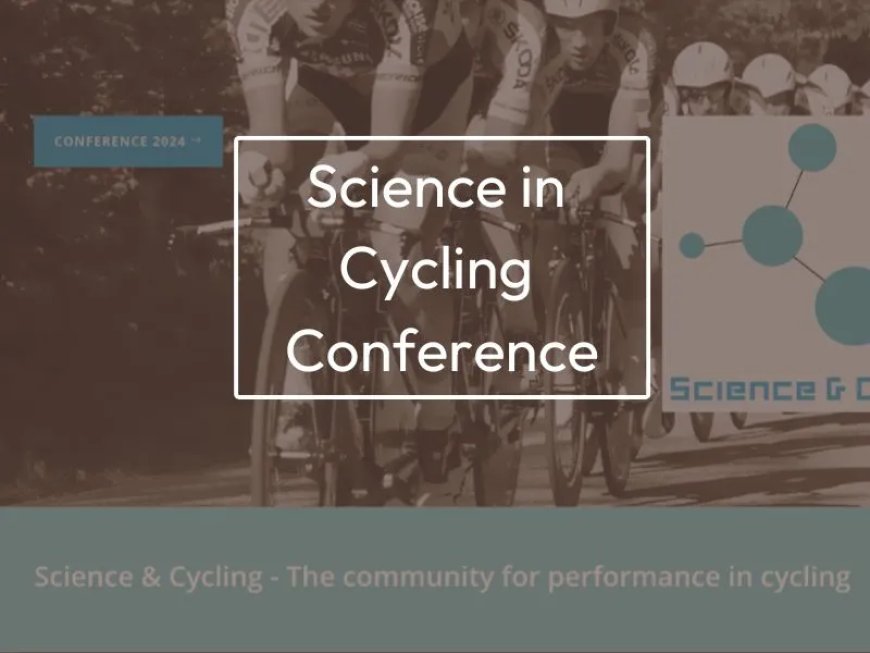
Last week I attended the Science & Cycling Conference in Florence, Italy. For those that aren’t aware, the Science in Cycling conference is put on by the journal of Journal of Science & Cycling and is typically hosted the two days before the Tour De France and in the same starting city. It’s an excellent opportunity to network with some of the thought leaders in cycling performance and if you are interested in the subject I highly encourage you to consider attending. It’s also great to get a chance to check out the start of the Tour. Stay tuned for our blog post from the ground at the Tour next week.
Science & Cycling Conference Presentations
Because many of the presentations were from pre-publication academic studies it’s difficult to give a full recap of the event and presentations. Instead, in this post I’ll touch on some of the presentations that I found interesting at the event and provide a brief commentary on what I took away from the key presentations that I attended.
Presentation: “The female cyclist: are men really from Mars and women from Venus?”
By Lieselot Decroix, PhD. – Performance Manager FDJ Suez
I was really impressed by this presentation. Dr. Decroix presented a very interesting look at the differences and similarities of coaching female athletes vs. males. As someone who is both a fan of women’s bike racing and has worked with a number of high level competitors, I was a little surprised at some of the nuances I had overlooked on this, specifically with regards to the relative intensity of women’s racing due to the shorter races. Because of this, women race at a higher average heart rate and TSS/hour versus men.
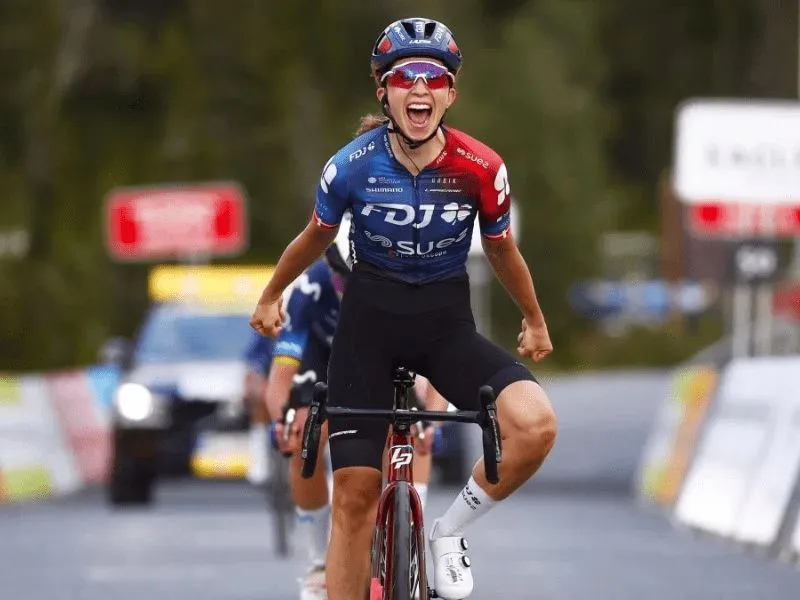
FDJ Suez women’s pro cycling team riding to victory
Key Takeaways: The obvious consideration with regards to bike fitting is if we should consider slightly more aggressive positions because of the shorter duration and higher intensity.
We’ll have to put some research into this.
Presentation: “Investigating Anxiety in Highly Trained and Elite Cyclists”
By Carol Royle, PhD. – Northumbria University
This presentation focused on anxiety in cyclists specifically in the aftermath of a crash. I was specifically interested in this session because I’ve had a number of crashes and have suffered from some mild anxiety getting back into both racing and even general riding after them. As they say, “cornering confidence consistently increases until it sharply decreases” meaning your confidence on the bike drops quite significantly after a crash. I can only imagine what riders such as Jonas Vingegaard or Fabio Jakobsen go through when they come back to racing from potentially fatal accidents.
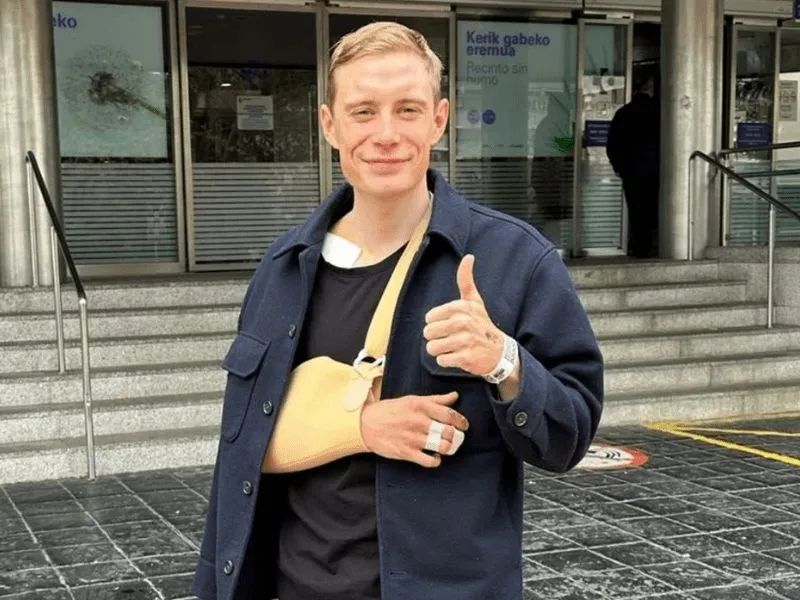
Jonas Vingegaard leaving hospital after crash at Itzulia Basque Country
In this presentation Dr. Royal introduced some initial research on Eye Movement Desensitisation and Reprocessing Therapy (EMDR) as a way to reduce anxiety and PTSD symptoms. I had never heard of EMDR before and it seems like something that can be delivered via an app such as https://www.bilateralstimulation.io/ so this could be a good approach for riders post crash. The research showed a solid statistical improvement for the subjects of the study but Dr. Royal did note recruitment proved to be extremely difficult.
Key Takeaways: It may be worth looking into EMDR if you are having anxiety getting back into racing or riding post crash.
Presentation: “A new approach to pedaling technique analysis”
By Jon Iriberri – Custom4Us / Visma Lease a Bike
Anyone who knows me knows that I’m a bit of a power meter and data nerd. I was a huge fan of Pioneer and their force monitoring technology both from a training and a bike fitting standpoint. I was devastated when they sold it to Shimano and it was subsequently abandoned. It seems like I’m not the only one that missed it. Presenter Jon Iriberri – a consultant to Visma | Lease a Bike – also missed the ability to measure instant force vectors and investigate pedaling efficiency, so he developed new software to get raw data from power meters in order to do advanced analyses.
Key Takeaways: In his presentation, Jon introduced this platform as well as the six key parameters it measures in order to help drive performance improvements. The platform is still in development but we hope to get our hands on it soon to continue to investigate fit related changes and how they affect pedaling dynamics.
Presentation: “Use of the bicycle as a method to improve the strength of the cyclist”
By David Barranco, PhD. – European University Madrid
Strength training in cycling has been a popular subject lately and many publications have related the current high level of performance in professional cycling to the addition of gym work. Dr. Barranco presented his research on the use of a bicycle instead of gym work to elicit similar muscular gains as a gym session. The results of the study were interesting with the research pointing to similar results from doing on-bike big gear starts versus gym sessions.

Force vectors through the pedal stroke
Key takeaways: As someone who never seems to find the time to get to the gym, but spends what feels like half my waking hours on the bike, I’m happy to see this research. I think I’ll be adding some big gear starts to my hard days in the near future.
Presentation: “Impact of Different Biomechanical Models on Knee Kinematics and Bicycle Fit Recommendations”
By Erin McCallister – Louisiana State University
This presentation was on my list to check out as cycling kinematics are obviously a very important part of our business. One thing that we often have to overcome with MyVeloFit is assuring users that our system system is accurate enough to provide actionable and repeatable insights into their bike positioning. I mention that because we have found that we generally have a 1-2° margin of error when comparing to other commercial motion capture systems. In her presentation Erin showed that changing biomechanical models within the Vicon (gold standard motion capture system) Nexus resulted in a roughly 1.82° different knee extension value. I found it interesting that such a gold standard system could still have a significant margin for error when measuring the same exact joint movement but using different biomechanical models with the same hardware.
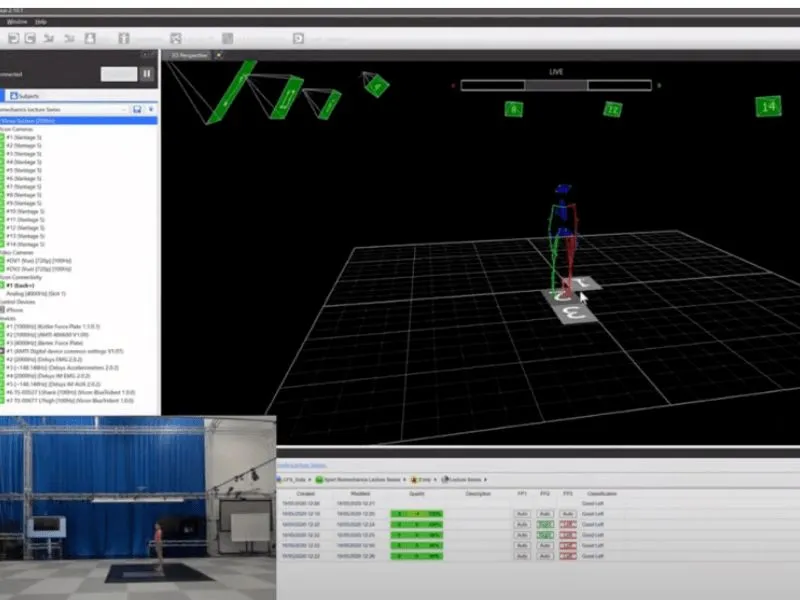
Vicon’s state of the art motion capture system
Key Takeaways: Even with the top clinical motion capture system, small changes can result in significant differences in joint kinematics. Bike Fitters (and those using bike fit software) should focus on relevant metrics and repeatability and worry less about sub 1-2° measurement accuracy.
Presentation: “Prevention, rehabilitation and biomechanical aspects in case of FLIA (Flow Limited Iliac Artery) in high-level cyclists”
Flow Limited Iliac Artery is a condition that is under reported on and investigated in the bicycle industry so I was very excited to see this presentation on the schedule. I also have a bike fit client who I’m sure is suffering from FLIA but is having difficulty getting diagnosed so this topic was especially relevant for me. FLIA is a condition where the Iliac artery gets damaged and blood flow is reduced to that leg. In cycling it typically results in a significant reduction in the ability to produce power with a single leg.
In her presentation Physiotherapist (and pro cyclist) Cariotta Fondriest introduced some interesting approaches to non-surgical prevention and rehab for FLIA as well as diagnosing via a thermal camera. I plan on testing her diagnosis approach with my client and investigating if crank length changes can result in improvements in the reduced arterial blood flow.

View of the external iliac artery in your bike position
Key Takeaways: Iliopsoas muscle hypertrophy is a significant risk factor for FLIA and iliopsoas hypertrophy is quite common in cycling.
Additional Resources
What's Your Reaction?




















